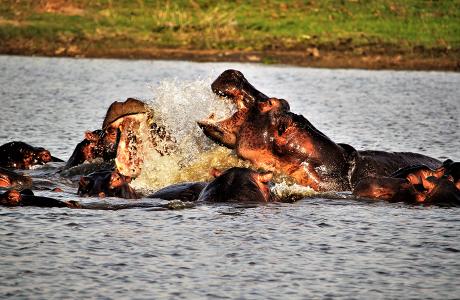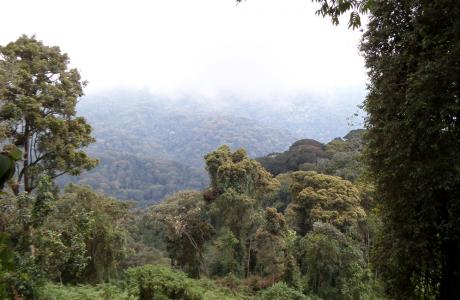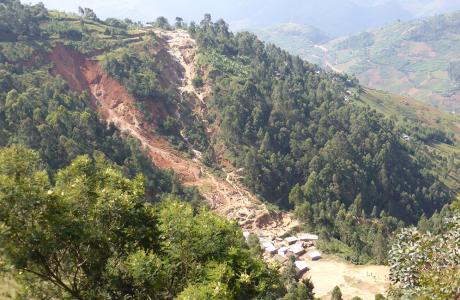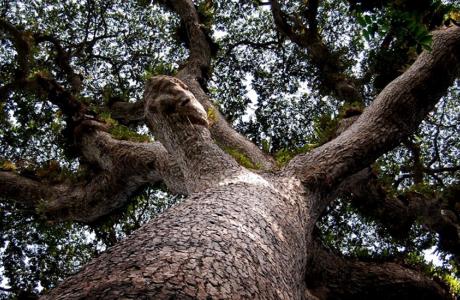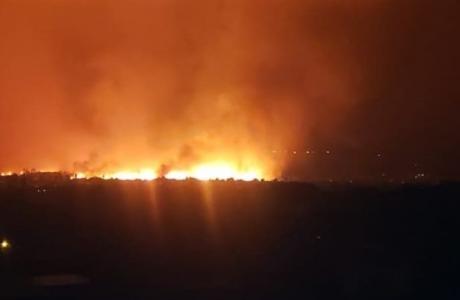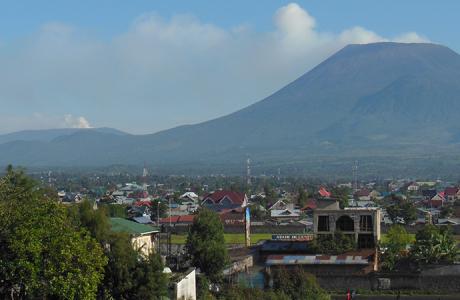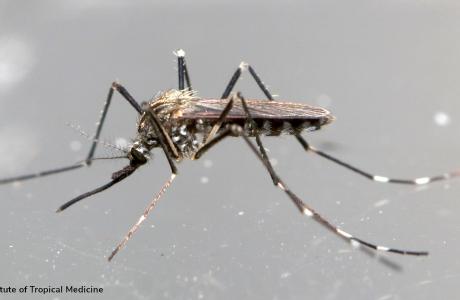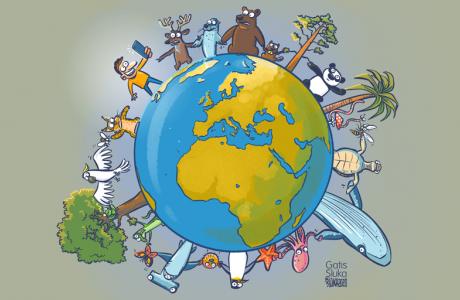Science news
- September 2021
Man-made lakes are breeding grounds for invasive species such as freshwater snails. Because snails can transmit parasites, the lakes are crawling with parasites that infect hippos. This is what biologists have observed in artificial lakes in Zimbabwe. Fueling infectious diseases is an indirect consequence of human intervention in nature that is still too often overlooked, the researchers say.
- August 2021
Scientists studying tropical forests in Africa’s mountains were surprised to uncover how much carbon they store, and how fast some of these forests are being cleared.
- August 2021
New research shows how deforestation and population growth have greatly impacted landslide risk in the Kivu Rift. This is what researchers from KU Leuven, the Royal Museum for Central Africa and the Université Libre de Bruxelles established from an analysis of six decades of forest cover and population trends in the region. The study is published in Nature Sustainability.
- June 2021
Recent research has shown that the carbon sink of tropical forests in Africa and Amazonia is saturated and will decline. However, current climate models are unable to reproduce these natural dynamics, according to a new study. The models even predict a slightly increasing carbon uptake. It is necessary to adjust these models, as they are at the basis of global climate policy.
- May 2021
Three scientists from the AfricaMuseum are going to help monitor the activity of the Nyiragongo volcano on site in Goma (Democratic Republic of Congo). They will do so with the support of the Belgian government, notably Ministers Meryame Kitir (Development Cooperation) and Thomas Dermine (State Secretary for Scientific Policy).
- May 2021
In conjunction with the reopening of the museum in 2018, the Royal Museum for Central Africa (RMCA) and the Egmont-Royal Institute for International Relations organised the conference Sharing Past and Future: Strengthening African-European Connections. The aim of the conference was to look back at the past and rethink future relations between Africans and Europeans. The proceedings of this conference are now available in open access.
- May 2021
On 22 May 2021, the Nyiragongo volcano in eastern DR Congo erupted. Lava flows reached villages on the outskirts of Goma. Days later, even though the lava flows stopped progressing ten to twelve hours after the eruption onset, the situation is still worrying with an intense seismic activity. The AfricaMuseum collaborates with the Goma Volcano Observatory for the monitoring of the volcanic and seismic activity. The museum also published a page with the latest developments regarding the eruption.
This collaboration has been going on for a long time. In 2005, the Royal Museum for Central Africa and the Goma Volcano Observatory started working together to better understand and assess the volcanic risks directly threatening Goma’s one million inhabitants.
- April 2021
The Asian bush mosquito is a widespread invasive species in many European countries. In Belgium, three populations have been detected: one in Natoye (Namur province) and two along the German border. An international team of researchers reveals in a new study published in Parasites & Vectors that these populations are the result of multiple introductions of various origins. This study will help optimise efforts to control this potentially pathogen-carrying invasive species.
- April 2021
The Royal Museum for Central Africa has joined 200 other world institutions in an international campaign to raise awareness of the need to protect our natural environment, ahead of the Conference of the Parties (CoP) 15 meeting of the Convention on Biological Diversity in 2021.
- March 2021
The debate about restitution of African heritage has recently received broad political and public attention. However, the debate mostly involves actors in Europe. What do Africans in Africa think about the issue? The debate so far shows little concern for their wishes and priorities.
